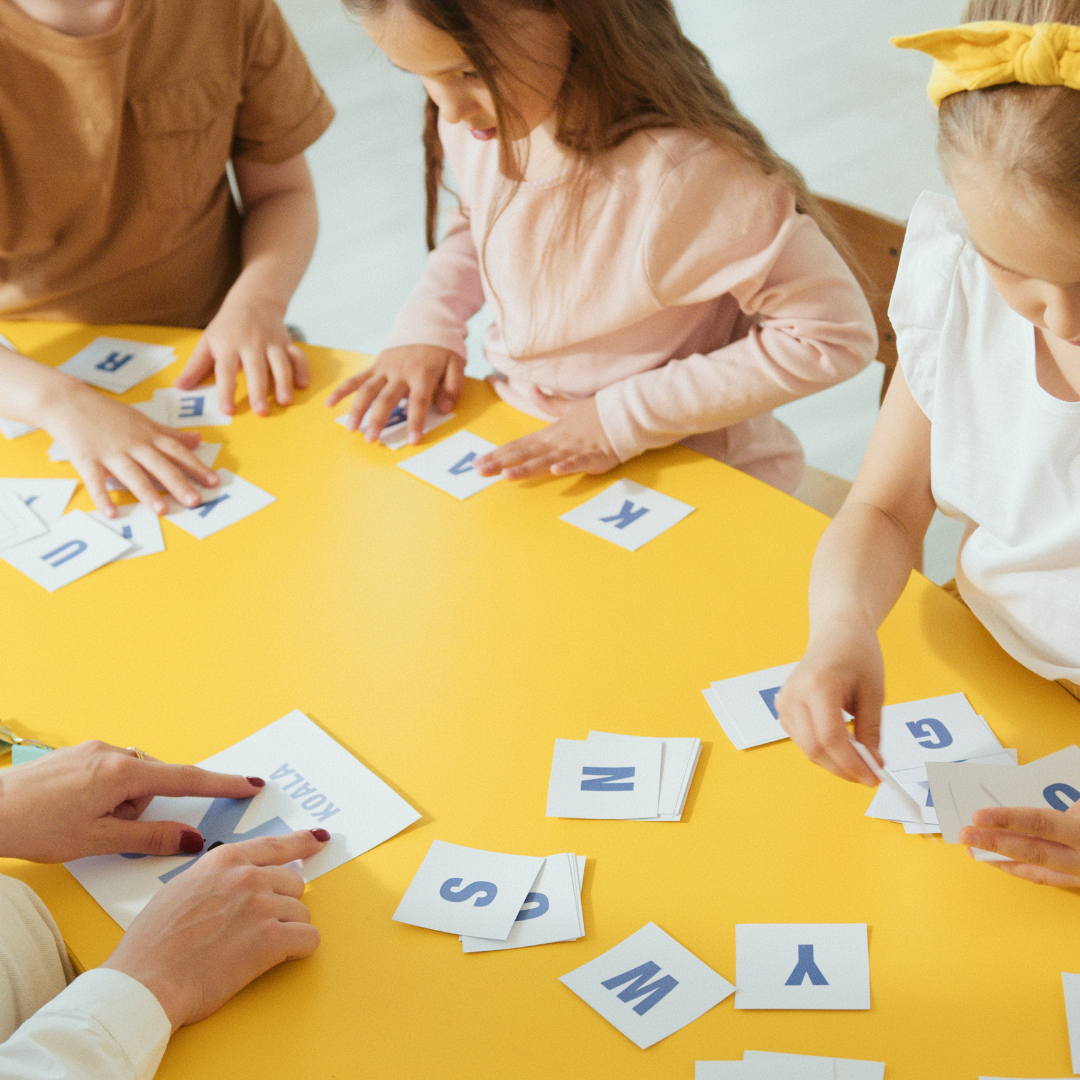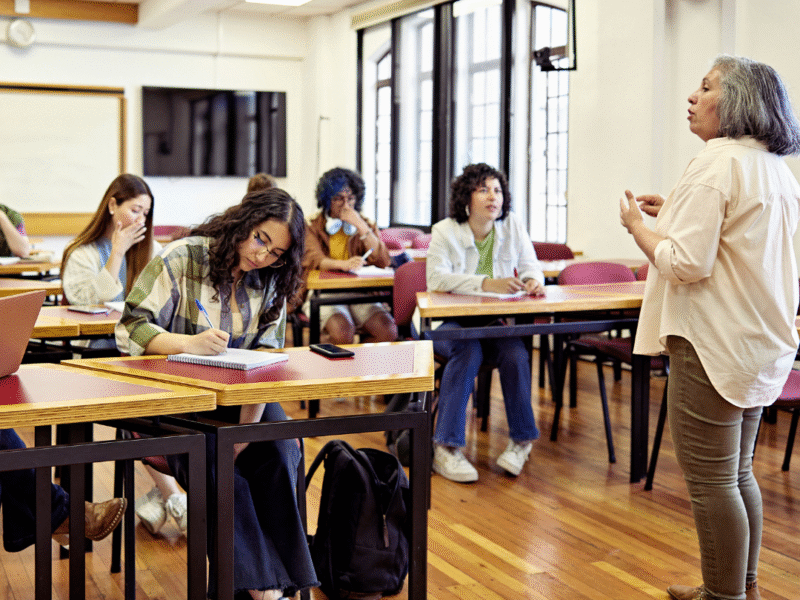People learn in various ways, impacted by their unique preferences, strengths, and experiences. Educators, parents, and learners can benefit from understanding these differences. Recognizing distinct learning styles helps tailor educational approaches to enhance engagement and retention.
Visual learners grasp concepts better with images, diagrams, and charts, while auditory learners excel through listening and discussions. Kinesthetic learners thrive in hands-on activities, making experiencing the material crucial for their understanding. Each style presents unique advantages, contributing to a more inclusive and effective learning environment.
By identifying and embracing diverse learning preferences, individuals can unlock their full potential. The journey of discovering one’s learning style leads to more efficient and enjoyable educational experiences.
Understanding Learning Styles
Learning styles refer to the various preferences individuals have for processing information. Recognizing these styles can enhance educational outcomes by tailoring teaching methods to meet diverse needs. This section explores the definition, significance, and history of learning style theories.
Definition of Learning Styles
Learning styles are commonly categorized into distinct modalities through which individuals absorb information. The most recognized types include visual, auditory, and kinesthetic learners.
- Visual learners prefer using images and spatial understanding to grasp concepts.
- Auditory learners thrive in environments with spoken information, such as lectures or discussions.
- Kinesthetic learners engage best through physical activities and hands-on experiences.
These categories help educators understand how to present new material effectively. Notably, many learning style models exist, but the most prominent aim is to simplify individual preferences into actionable categories.
The Importance of Recognizing Learning Styles
Recognizing learning styles enables educators to create more effective teaching strategies. By tailoring instruction to match students’ preferred learning methods, retention and engagement tend to improve.
Benefits include:
- Enhanced comprehension: Students grasp concepts more quickly when presented in their preferred style.
- Increased motivation: Tailored learning can boost students’ interest and participation.
- Reduced frustration: Understanding personal learning preferences may lessen struggles with material.
When teachers recognize these styles, they foster an inclusive classroom environment. This can lead to better academic performance and a more positive learning experience.
Historical Overview of Learning Style Theories
The concept of learning styles gained prominence in the late 20th century. Early theorists like David Kolb and Howard Gardner laid the groundwork for understanding individual learning preferences.
Kolb’s Experiential Learning Theory emphasizes the importance of experience in the learning process. He identified four stages of learning:
- Concrete Experience
- Reflective Observation
- Abstract Conceptualization
- Active Experimentation
Gardner’s Multiple Intelligences Theory expanded the notion of intelligence, listing several distinct types, including linguistic, logical-mathematical, and interpersonal intelligence. These theories sparked widespread interest and debate about how people learn.
Many educators now use these frameworks to inform their teaching practices. This ongoing dialogue continues to shape approaches in education today.
Different Models of Learning Styles
Various models of learning styles have emerged to categorize the ways individuals process information. These frameworks provide insights into how to tailor educational approaches to suit different learners.
VARK Model
The VARK Model classifies learners into four categories: Visual, Auditory, Reading/Writing, and Kinesthetic. Each type represents a preferred mode of receiving and processing information.
- Visual learners prefer diagrams, charts, and graphs.
- Auditory learners benefit from listening to lectures and discussions.
- Reading/Writing learners engage best through text and written material.
- Kinesthetic learners thrive on hands-on activities and physical engagement.
Understanding which types an individual aligns with can enhance teaching effectiveness and learning outcomes.
Kolb’s Experiential Learning Theory
Kolb’s Experiential Learning Theory identifies four stages of learning: Concrete Experience, Reflective Observation, Abstract Conceptualization, and Active Experimentation.
- Concrete Experience involves engaging directly in an activity.
- Reflective Observation emphasizes reflecting on that experience.
- Abstract Conceptualization entails learning from the experience and forming new ideas.
- Active Experimentation is the application of concepts to new situations.
This cyclical process shows how learners can continuously develop skills and understanding through real-life experiences.
Gardner’s Theory of Multiple Intelligences
Howard Gardner proposed the Theory of Multiple Intelligences, which suggests that intelligence is not a single entity. Instead, it encompasses various types, including:
- Linguistic Intelligence: sensitivity to spoken and written language.
- Logical-Mathematical Intelligence: the ability to analyze problems logically.
- Spatial Intelligence: capacity to think in three dimensions.
- Musical Intelligence: skill in performance and appreciation of musical patterns.
- Bodily-Kinesthetic Intelligence: using one’s body to solve problems or create products.
- Interpersonal Intelligence: understanding and interacting with others effectively.
- Intrapersonal Intelligence: self-awareness and ability to self-regulate emotions.
- Naturalistic Intelligence: the ability to observe and categorize elements in nature.
This theory encourages educators to recognize and nurture diverse talents and abilities in learners.
Fleming’s VAK/VACT Model
Fleming’s VAK/VACT Model builds upon the VARK framework, focusing on Visual, Auditory, Kinesthetic, and (in the VACT version) Tactile learning styles.
- Visual learners grasp concepts better with visual aids.
- Auditory learners excel through listening.
- Kinesthetic learners benefit from practical interactions.
- Tactile learners engage through touch and manipulation.
This model promotes the understanding that incorporating multiple learning styles in instruction can create an inclusive environment, enhancing student engagement and retention.
Identifying Individual Learning Styles
Recognizing individual learning styles is essential for tailoring educational approaches. Two effective methods include using assessment tools and observing learning behaviors.
Assessment Tools and Inventories
Various assessment tools can help identify a person’s learning style. These assessments typically involve questionnaires that gauge preferences in learning environments. Popular tools include:
- VARK Questionnaire: This assesses preferences for Visual, Auditory, Reading/Writing, and Kinesthetic learning styles.
- Learning Style Inventory (LSI): This tool focuses on multiple intelligences, highlighting areas like verbal-linguistic or logical-mathematical strengths.
Engaging with these inventories allows individuals to gain insights into their preferred learning methods. Results can guide educators in adapting instructional strategies.
Observing Learning Behaviors
Another way to identify learning styles is by observing how individuals engage with the material. Notable behaviors can provide clues to their preferences, such as:
- Active Participation: A learner who prefers hands-on activities might demonstrate enthusiasm during practical exercises.
- Discussion Engagement: Those who thrive in verbal exchanges often excel in collaborative environments and discussions.
Keeping track of learning preferences over time can help in adjusting methods. Systematic observation can lead to understanding how each learner processes new information effectively.
Applications of Learning Styles
Learning styles influence various domains, from education to personal development. Understanding how these styles function can enhance teaching methods, improve learning outcomes, and inform curriculum design.
In Educational Settings
In educational environments, recognizing different learning styles can lead to more tailored instruction. Teachers can implement diverse teaching strategies that cater to visual, auditory, and kinesthetic learners.
For example:
- Visual Learners: Use diagrams, charts, and videos.
- Auditory Learners: Incorporate discussions, music, and lectures.
- Kinesthetic Learners: Provide hands-on activities and real-life applications.
Such differentiation helps students grasp concepts more effectively. It also fosters engagement, as students tend to perform better when lessons align with their preferred learning mechanisms.
For Personal Development
In personal development, awareness of learning styles aids in self-directed learning. Individuals can identify their preferred methods, enabling them to choose study aids and techniques aligned with those styles.
For instance, a person who understands they are a visual learner might prioritize:
- Creating mind maps
- Utilizing flashcards
- Watching educational videos
This self-awareness promotes more efficient resource use. Recognizing one’s learning style can also encourage the exploration of new strategies, enhancing adaptability and lifelong learning.
Implications for Teaching and Curriculum Design
Understanding learning styles significantly impacts teaching methodologies and curriculum design. Educators can create mixed-method teaching models that include various instructional strategies. This alignment caters to a broader range of learning preferences.
For example, a well-structured curriculum might include:
- Lectures with Visual Aids
- Group Work that Suits Social Learners
- Reflective Practices for Intrapersonal Learners
Incorporating these elements not only supports diverse learners but also encourages critical thinking and problem-solving. Ultimately, a responsive curriculum can foster an inclusive educational experience that enhances overall student success.
Challenges and Controversies
The topic of learning styles is frequently met with skepticism. Stakeholders express concerns regarding the theoretical underpinnings and practical applications of learning styles in educational settings.
Debates Regarding the Validity of Learning Styles
Critics question whether learning styles are based on solid scientific evidence. Numerous studies have attempted to validate various models, such as Visual, Auditory, and Kinesthetic (VAK). However, some researchers argue that the evidence supporting distinct learning styles is insufficient. They suggest that tailoring educational approaches solely based on these styles does not significantly enhance learning outcomes. This debate raises questions about the reliance on outdated theories rather than evidence-based teaching methods. Without robust data, educators remain divided over how to best support diverse learners.
Potential for Misapplication
Misapplication of learning styles can lead to ineffective teaching strategies. For instance, educators may pigeonhole students into specific categories, limiting their exposure to diverse methods. This can hinder critical thinking and adaptability. Furthermore, the fixation on styles may distract from more effective teaching practices, like differentiated instruction. Educators may focus more on aligning lessons with perceived learning styles rather than addressing the content and skills students need to master. This misalignment risks compromising the quality of education and may perpetuate misunderstandings about how individuals learn best.
Future Directions in Research
Future research must focus on establishing a clearer connection between learning preferences and actual learning outcomes. Studies should ideally employ rigorous methodologies to determine the effectiveness of instructional strategies aligned with learning styles. Investigating the cognitive processes underlying learning can provide valuable insights on how to engage students more effectively. Additionally, interdisciplinary approaches may lead to a more comprehensive understanding of learning. Education must adapt to current research trends and findings to ensure that the strategies employed are both relevant and beneficial to learners.
Integrating Learning Styles into Training and Development
Incorporating different learning styles into training programs enhances engagement and knowledge retention. Trainers and educators can implement specific strategies and create environments that cater to diverse learning preferences.
Strategies for Trainers and Educators
Effective trainers can utilize a variety of teaching methods to accommodate different learning styles. Visual learners benefit from diagrams, charts, and video content. Auditory learners engage better through discussions, podcasts, or lectures.
Kinesthetic learners require hands-on activities or simulations. A blended approach that mixes these methods can increase effectiveness.
Additionally, trainers should assess individual learning styles through surveys or questionnaires. This information enables tailored lesson plans, ensuring that all participants can thrive. Regular feedback from learners can also guide adjustments in teaching strategies.
Building Adaptive Learning Environments
Creating environments conducive to diverse learning styles is essential. Flexible classroom layouts can support both group work and independent study. Incorporating technology offers personalized pathways for learners.
For instance, learning management systems can adapt content based on a user’s preferences. Incorporating interactive elements, such as quizzes and multimedia, enhances engagement.
Furthermore, offering options for project-based assessments allows learners to demonstrate understanding in ways that align with their strengths. Regular review and updates of the training materials ensure relevance and responsiveness to changing learning needs, making for a dynamic educational experience.
Conclusion
Different learning styles play a significant role in education and personal development. Recognizing and understanding these styles can help tailor teaching methods to fit individual needs.
Key Learning Styles:
- Visual Learners: Benefit from diagrams and charts.
- Auditory Learners: Prefer listening to information, such as lectures.
- Kinesthetic Learners: Engage better through hands-on activities.
Educators are encouraged to incorporate a variety of techniques to accommodate diverse learning preferences. This approach promotes a richer educational experience.
Incorporating assessments to identify learning styles can enhance individualized learning plans. Adjusting methods can lead to better retention and understanding of material.
Ultimately, embracing different learning styles fosters an inclusive environment. This inclusivity empowers learners to thrive and achieve their educational goals.



